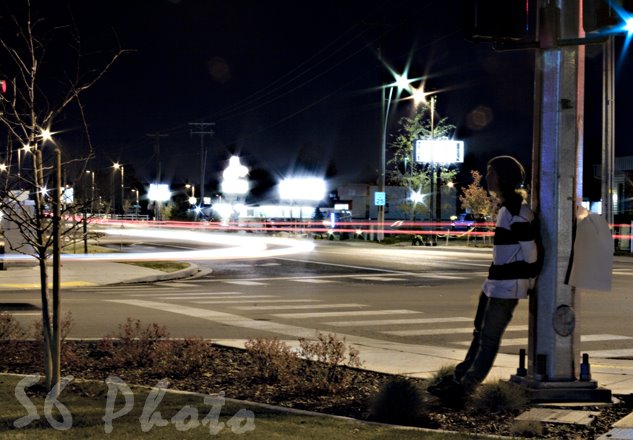Ahhhhhhhhhhh, hmmmmm well, winter started off great. Baker was awesome and then right when I got home the cities started getting snow. Last season we didn't have the opportunity to hit street rails so when this snow came we jumped on it. After a short rail trip to Moscow and Lewiston I came back home for Thanksgiving and got a little sledding with the family in. Then skied Schweitzer for opening day, then I got the call to go to Pullman for more street rails. I was pumped because we've been getting some shots on urban features and I was finally starting to get into the swing of things. I went to Pullman and thats when things stopped.
As quickly as the season started it stopped. I'm broken and I'm pretty bummed about it, not sure yet how long I'll be broken but its not looking good.
That being said I'm going to be having massive amounts of time to challenge myself creatively and spend some time really focusing on other aspects of photography.
To start this journey off I'm going to talk a little bit about an area of photography that is often overlooked: printing.
People can tell you differently but seeing and image on a monitor and seeing a tangible print form of an image are completely different. For the fine art side of S6 Photo this is great but for the portraiture side of S6 Photo it can be a huge hassle. I'm printing with a Pro 9000 Mark II right now and after much trial and error I can guarantee you that if your running a small portraiture business that gets a sufficient amount of business it is never worth the hassle and your time to do your printing yourself. Find a reputable website( I use bayphoto.com) get used to their roes system, have them color correct for you, and have them drop ship it directly to your client. From my experience nothing is easier and the results are almost always perfect, and if there not you ship them straight back and they'll print them again, free of charge.
Portraits are simple, ship them out every time. Fine art, specifically landscapes, is a completely different story. The impact you can get from a large printed landscape image is drastic. So much detail that was overlooked on the monitor can be really prominent in a large print. I rarely ever print a landscape smaller than a 12x18, if you go any smaller its almost the same as if you would have shown the client the image straight from your camera's LCD, its just not gonna have the impact. In my opinion the impact is what sells.
After size next in importance is your printing medium. This is where you can really get creative. If I'm printing on paper for landscapes I almost always use a metallic or a pearl paper. You lose a little bit of tone range when printing to metallic paper but the effects are worth it. One thing to note is try to stay away from printing on metallic paper if there are people in the image. Paper is the standard and in my opinion the most effective way of printing landscapes in the sense of clarity, colors, and tone depth but for some specific images, mainly my staple panoramics, I have them printed directly to sheets of aluminum. The wow factor to these is amazing, it gives the piece an extreme gloss that is completely even throughout the entire image, very comparable to as if your were looking at a sheet of glass. No frame is needed for these pieces and the biggest selling point other than the wow factor is that they're different from the rest. There are a few downfalls: I don't have the means to print these on my own and there expensive to print to say the least, also you lose tone range, sharpness, and every once in awhile the metal will arrive bent. Metal prints aren't for everything but for select pieces I wouldn't choose any other way.
For the paper route framing is also another big and expensive hurdle. My standard for the moment is a 1 inch matte black frame with a 3 inch double matte black on top of white. Its simple, works good for basically every photo, and most importantly doesn't take away from the image. Some call me crazy but I never use glass, I have it if the client wants it but I never use it for the display. Unless your using museum quality glass ($$$$$$) all glass will do is take away from the effects of the metallic paper that you printed on. Get to know a framer, bring your work in and see what they think (in my experience they have a viable, creative viewpoint), buy the materials from them, have them show you how to frame one of them, then finally rent some bench time and finish the rest on your own.
Hopefully this has helped you out and if you happen to have any more questions just drop me an email: info@s6photo.com
Can't do a photoblog without a picture, here's an example of a landscape that prints to metal really well:



No comments:
Post a Comment